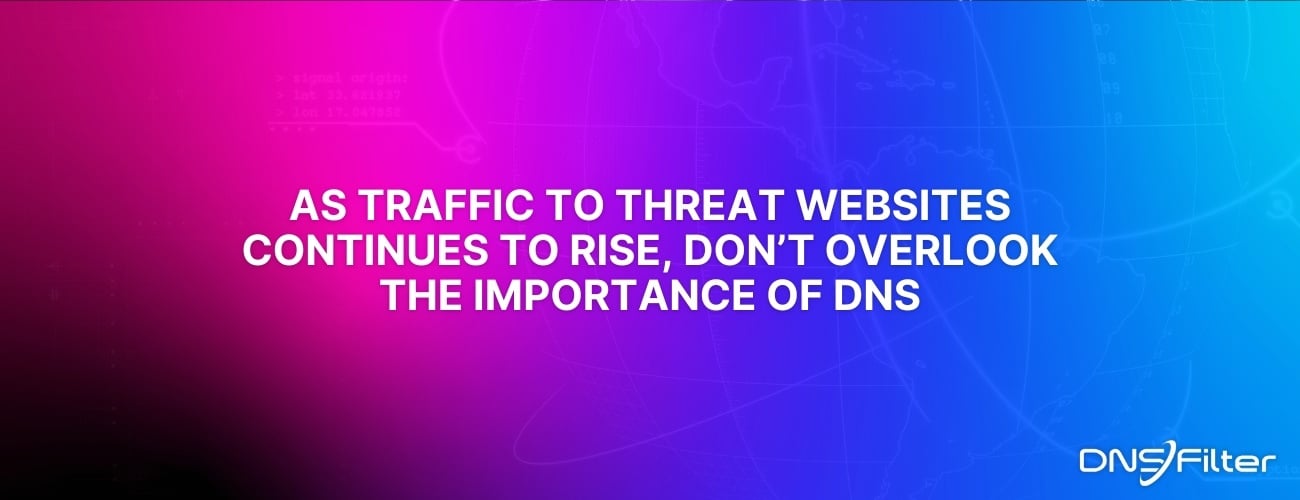by Ken Carnesi on Mar 27, 2024 11:25:52 AM
In the early days of networking, if you wanted to send a message from one machine to another, you manually entered the IP address. This quickly became unsustainable as the network grew and heaps of websites were created. Then, in 1983, network engineer Paul Mockapetris introduced the Domain Name System (DNS), which allowed the internet to grow into the massive global network it is today. It’s basically the foundation on which the internet works.
DNS translates a domain name like www.example.com into four sets of numbers that comprise that domain’s IP address. It saves users the hassle of having to memorize seemingly random strings of numbers—the IP address—and it’s why DNS is often called “the phonebook of the internet.”
Read more at forbes.com
 As Traffic to Threat Websites Continues to Rise, Don’t Overlook the Importance of DNS
As Traffic to Threat Websites Continues to Rise, Don’t Overlook the Importance of DNS
At the scale of the Internet, threats are relentless. Domain Name System (DNS) technology is over 40 years old, but it remains just as relevant today—if not more so—to help organizations stay secure from malicious threats. What most people don’t know is that more than 70% of attacks involve the DNS layer. Every malicious request blocked represents a real attack prevented, real harm avoided, and real people protected. This underscores the power of...
 Scammers using AI to create fake IRS sites. Here's other scams to watch out for.
Scammers using AI to create fake IRS sites. Here's other scams to watch out for.
Cybersecurity experts expect a significant surge in tax-related scams in the final month before Tax Day.
 From Weakest Link to Strongest Defense: Building a Human-Centric Cybersecurity Approach
From Weakest Link to Strongest Defense: Building a Human-Centric Cybersecurity Approach
There's a contradiction in cybersecurity: humans can be both the weakest link and the strongest. For instance, humans are highly susceptible to deception. This is an age-old problem; look no further than the Trojan Horse of Greek lore or the Ghost Army of World War II. In the latter case, Allied forces created inflatable tanks and faked radio traffic, among other deceptive tactics across Europe, to confuse, distract and divert enemy forces and sa...